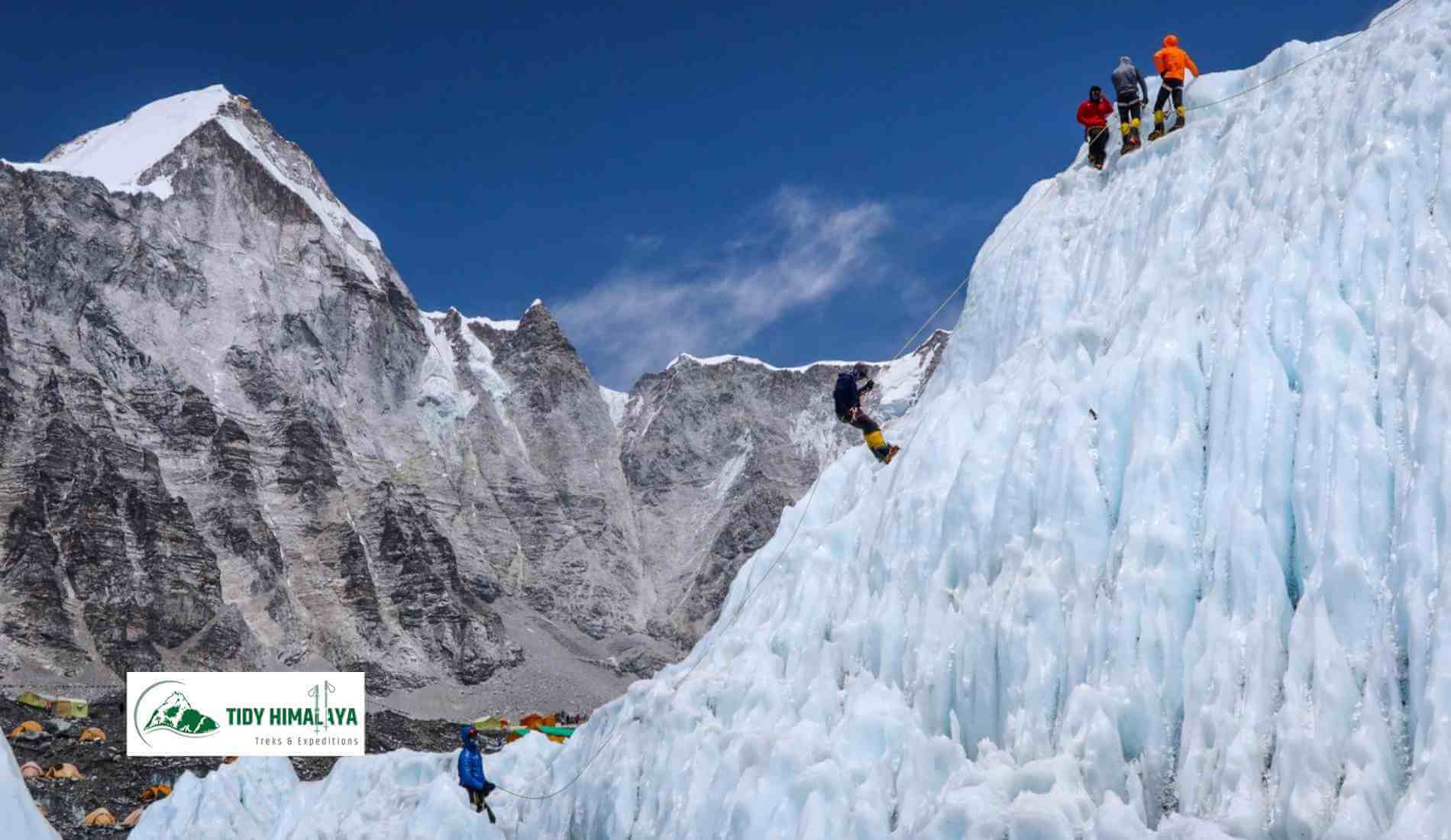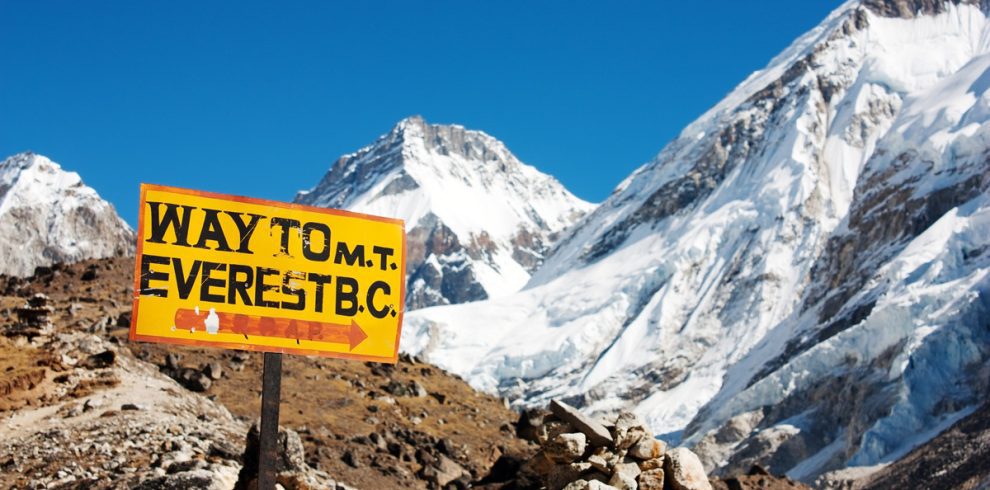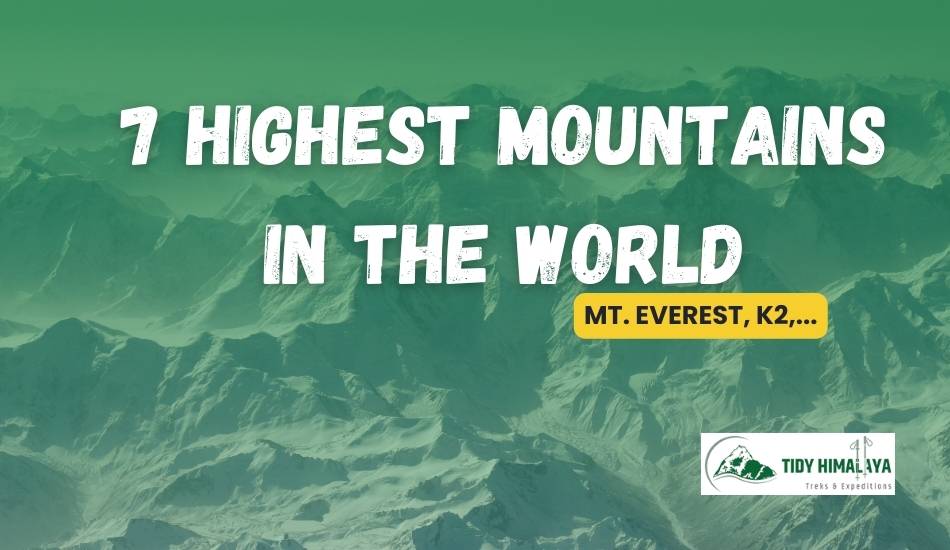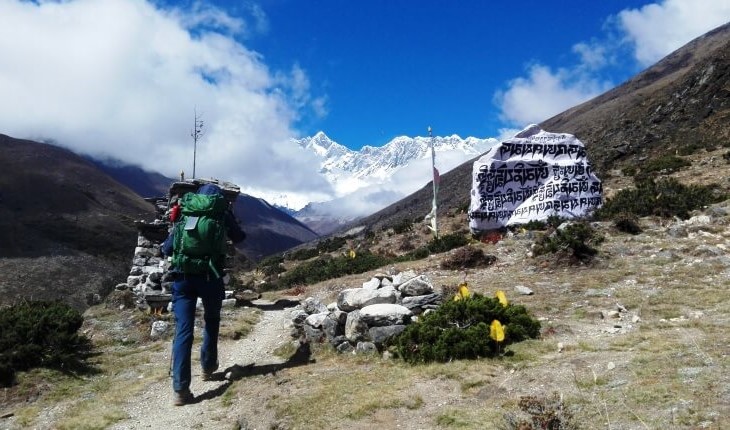One of the world’s most well-known and remarkable glaciers is the Khumbu Icefall in Nepal’s Solukhumbu region. Hidden in the Himalayas, this icy giant Khumbu Glacier is a breathtaking example of nature’s majesty.
This massive ice formation, also known as the “Frozen River of Everest,” is an essential part of the route for climbers hoping to reach the summit of Mount Everest and a necessary feature of the area’s natural geography.
If you’re planning an adventure from the USA, here’s why the Khumbu Glacier should be at the top of your list. Let’s review everything you need about the Khumbu Glacier and some amazing facts that set it apart.
Can Trekkers Visit the Khumbu Glacier?
Yes, the glacier is known for its hidden crevasses and unpredictable ice conditions, and a well-prepared trekker can enjoy a thrilling visit.
It’s not just a walk in the park; it’s a journey that brings you face-to-face with some of the most dramatic landscapes on Earth, igniting a sense of excitement and anticipation.
However, the Khumbu Glacier is not without its dangers. The glacier’s surface is riddled with crevasses—deep cracks that can be hidden under a layer of snow. These crevasses pose a significant risk to anyone on the glacier. Additionally, the ice can shift without warning, creating unstable conditions.
For these reasons, having the right trekking kit is essential to getting close to or traversing parts of the glacier. Crampons, ropes, and ice axes are typically required, along with a sound knowledge of how to use them.
Equally important is the guidance of an experienced guide who knows the glacier well. Local guides can lead you safely, ensuring you feel secure and well-prepared to navigate the most hazardous areas.
Why is the Khumbu Glacier Important and a Must-Visit for Everest Expeditions?
The Khumbu Glacier is the starting line for the iconic climb to the peak of Mount Everest. This glacier, with its infamous Khumbu Icefall, is critical for climbers. It involves navigating a complex network of crevasses and towering blocks of ice—an actual test of mountaineering skill and courage.
The route through Khumbu is more than just a path to the top; it’s a rite of passage for climbers from around the globe, including many adventurers traveling from the USA.
The Khumbu Glacier has a part called the Khumbu Icefall. This icefall is tricky and dangerous because it has deep cracks and big ice blocks that can move or fall.
Climbers need to know Khumbu icefall facts to be safe and find the best way to get there.
People planning to climb Everest use a Khumbu glacier map to choose where to put the base camp. They also look at the map to find the safest way across the icefall. Knowing where it is safe to walk helps climbers go up and down the mountain without getting hurt.
The Khumbu Glacier is like a road on Everest. It’s important because it helps climbers reach the top of the highest mountain in the world, and knowing about Khumbu makes their journey safer.
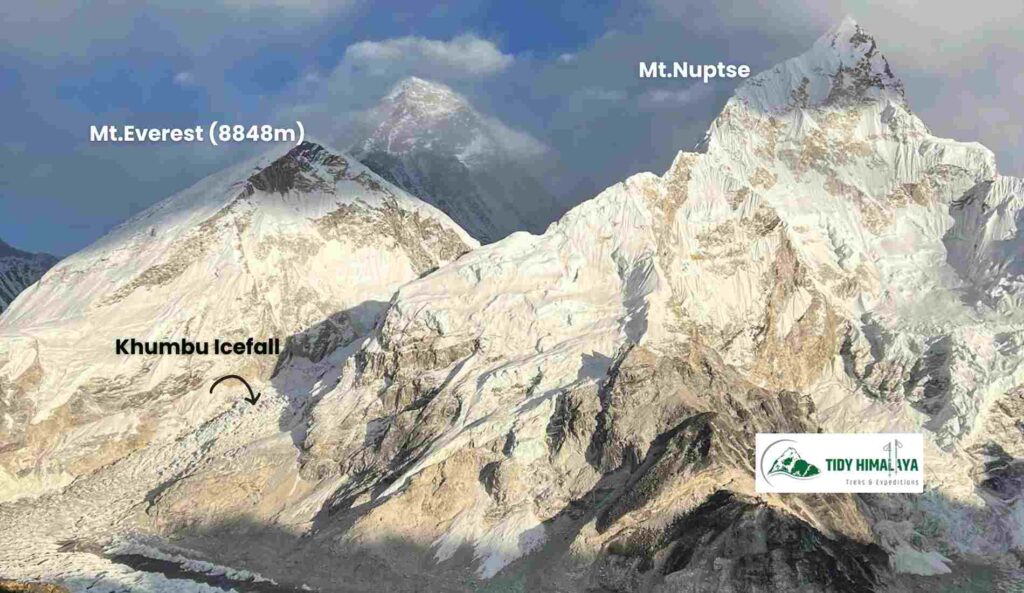
What Are Some Interesting Facts About the Khumbu Glacier?
The Khumbu Glacier is one of the highest glaciers in the world. It is constantly moving, creating ever-changing landscapes of ice formations. The glacier is also a living laboratory for scientists studying glaciology, climate change, and high-altitude ecosystems. The 15 facts of Khumbu Glacier is:
1. Location:
The Khumbu Glacier is in Sagarmatha National Park, a UNESCO World Heritage Site in northeastern Nepal. It is close to Mount Everest, the tallest peak in the world.
2. Length and Size:
The glacier’s length is approximately 17 miles (27 kilometers) from its source, located in the Western Cwm, a wide glacial valley with a level bottom, to its tip at the foot of the Khumbu Icefall. Its total size is roughly 70 square miles or 180 square kilometers.
3. Glacial Retreat:
Like many other glaciers worldwide, the Khumbu Glacier has been retreating significantly over the last few decades. Due to changes in climate patterns and rising temperatures, the glacier has been melting more quickly and receding over the previous few decades. As a result, new glacial lakes have formed, and rocky moraines have become visible. This retreat has affected mountaineering operations as well as nearby communities.
4. Effect on Landscape:
The area’s landscape has changed due to the Khumbu Glacier’s retreat. Moraines are accumulations of rock and debris left behind by the melting and retreating glacier. These stony, jagged formations are visible and represent the glacier’s former extent.
5. Impacts on Local Sherpa settlements:
Some Sherpa settlements in the Khumbu region have historically relied on the glacier for livestock grazing, irrigation, and water resources. However, due to glacier retreats and modifications to the local water cycle, these populations may need help getting water for everyday necessities and agricultural pursuits.
6. Mountaineering Route:
The Khumbu Glacier is a significant component of the well-liked South Col route to the top of Mount Everest. Climbers use the glacier to access higher camps and, eventually, the summit. However, the glacier presents several difficulties and risks because of its instability and faults.
7. Khumbu Icefall:
The dangerous Khumbu Icefall is the most well-known feature of the Khumbu Glacier. It is a tangle of towering ice slabs, deep crevasses, and sliding ice blocks between Everest Base Camp and Camp I. To cross safely, you’ll needs to use climbing skills and cautious navigation.
→ How Many Camps are on Mount Everest?
8. Research on Glacial Dynamics:
The Khumbu Glacier is a crucial research location for glaciologists and climate experts. It provides valuable insights into the dynamics of high-altitude glacial systems and the consequences of climate change on glaciers, keeping the audience informed and aware of its scientific importance.
9. Socioeconomic Importance:
Mountaineering and trekking tourism are significant parts of the Khumbu region’s economy. Adventurers and environmental lovers worldwide are drawn to the glacier and the breathtaking scenery it surrounds. The tourism sector boosts the area’s socioeconomic growth by giving local communities work opportunities and revenue.
10. Environmental Concerns:
Due to the Khumbu Glacier retreating, the area now includes glacial lakes. These lakes are created when meltwater builds up behind ice and debris dams that occur naturally. However, because these dams have the potential to collapse and create glacial lake outburst floods (GLOFs), their stability is a matter of concern. GLOFs can result in disastrous downstream floods, endangering nearby infrastructure and communities.
11. Cultural Significance:
The Khumbu Glacier and the Everest region around it are essential for the Sherpa people. Renowned for their proficiency in mountaineering, Sherpas have developed a strong connection with the peaks and glaciers. Monasteries, prayer flags, and holy locations dot the area, symbolizing the spiritual bond between the Sherpa people and the natural world.
12. Conservation Efforts:
The preservation of the region’s distinctive ecosystem has come under threat due to the retreat of the Khumbu Glacier and the effects of climate change. Mountaineering groups, local towns, and conservation organizations are actively working to increase public awareness, encourage environmentally friendly tourism, and support programs that lessen environmental effects.
13. Inspiration and Filming:
Numerous explorers, mountaineers, and filmmakers have drawn inspiration from the Khumbu Glacier and its environs. With Mount Everest’s attraction, the area’s spectacular scenery has drawn explorers looking to push their boundaries and document the spirit of high-altitude nature in images, videos, and documentaries. Due to its breathtaking ice formations, rugged terrain, and proximity to Mount Everest, it is a well-liked option for adventure seekers and filmmakers.
14. Everest Base Camp trek:
A notable aspect of the well-known Everest Base Camp trek is the Khumbu Glacier. Every year, thousands of hikers embark on this strenuous expedition to experience the area’s breathtaking natural splendor, including the glacier and its stunning surroundings.
15. Climate Change Indicator:
Another significant indicator of climate change is the Khumbu Glacier. Scientists have been monitoring its retreat over time and have seen notable variations in length and volume. These findings offer important information about how global warming affects habitats at high altitudes. The melting of the glacier impacts the water resources in the area and presents difficulties for mountain climbers since it changes the stability of climbing routes.
Summing Up
The Khumbu Glacier reflects the spirit of Everest’s breathtaking beauty and is more than just a sheet of ice. It is an organism that lives and breathes. There’s no doubt that this glacial giant has a unique position in the history of exploration, regardless of your level of interest in climbing mountains or being an armchair explorer.
Ready for Your Khumbu Glacier Adventure?
Embarking on a journey to the Khumbu Glacier is more than just a trek; it’s an encounter with one of the most awe-inspiring places on the planet. Book your Everest Base Camp Package! For travelers from the USA looking to explore this icy wonder, Tidy Himalaya offers expertly guided tours that promise safety, deep local knowledge, and a commitment to the highest environmental standards.
Khumbu Glacier Common Queries
Climate change has led to a noticeable retreat of the Khumbu Glacier over recent decades. This retreat has been documented through satellite imagery and on-the-ground research, indicating a reduction in glacier volume and length, which can impact local water resources and mountaineering routes.
The glacier is expected to move 0.9 to 1.2 m (3 to 4 feet) down the mountain daily.
Nepal’s largest glacier is the Khumbu Glacier, the largest glacier in the country at 24,900 feet.
Yes, the Khumbu Glacier is melting. Studies have found that it is rapidly melting and thinning due to global warming.
The glacier is a source of fresh water for local communities but poses a risk of glacial lake outburst floods (GLOFs). As the glacier melts, it can contribute to the formation of glacial lakes, which can burst and cause devastating floods downstream.

